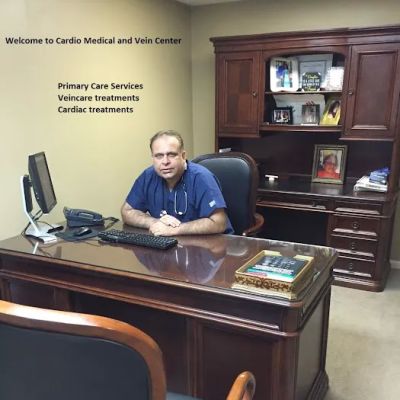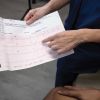CT Angiography for Detecting Heart Blockages
As someone who has experienced heart-related health issues in the past, I understand the importance of early detection and accurate diagnosis. One diagnostic tool that has revolutionized the way heart blockages are detected is CT angiography. This non-invasive procedure has allowed many individuals to get a clearer picture of their heart health without the need for invasive surgeries. Let me take you through my journey of learning about CT angiography, and how it helps in detecting heart blockages effectively.

1. What is CT Angiography?
CT angiography, or coronary CT angiography (CTA), is a medical imaging technique used to visualize the blood vessels of the heart. This diagnostic procedure utilizes a special type of CT scanner that can capture detailed images of the heart and arteries, allowing healthcare providers to identify blockages, narrowing, and other issues related to the coronary arteries. I had never heard of this method before, but after my doctor recommended it, I was amazed at how it could detect heart blockages with high precision.
Atlanta Heart Specialists
atlanta heart specialists
4375 Johns Creek Pkwy #350, Suwanee, GA 30024, USA

1.1 How CT Angiography Works
The procedure involves injecting a contrast dye into the bloodstream through an intravenous (IV) line. This dye enhances the visibility of blood vessels during the CT scan. The scan then takes multiple images of the heart and surrounding arteries, which are combined to create a 3D model. These images allow doctors to assess the presence and severity of blockages or narrowing in the coronary arteries. The entire process typically takes 15 to 30 minutes, making it a quick yet effective diagnostic tool.
1.2 Advantages Over Traditional Methods
What I found particularly impressive about CT angiography is its ability to provide detailed images without the need for invasive procedures like coronary angiography. While traditional methods involve inserting a catheter into the arteries, CT angiography offers a safer and less painful alternative. For individuals who have concerns about invasive testing, this can be a much more comfortable option.
2. Why Is CT Angiography Used to Detect Heart Blockages?
CT angiography is primarily used to detect coronary artery disease (CAD), a condition where the arteries that supply blood to the heart become blocked or narrowed. CAD is one of the leading causes of heart attacks and can lead to serious complications if not diagnosed early. As someone who had a family history of heart disease, I was particularly concerned about the possibility of CAD. The fact that CT angiography could detect this condition before symptoms even appeared made me feel more confident in taking preventative steps for my health.
2.1 Identifying Blockages and Narrowing
One of the main reasons doctors use CT angiography is to assess the extent of blockages or narrowing in the coronary arteries. These blockages are typically caused by a buildup of plaque, which restricts blood flow to the heart. In some cases, this plaque buildup can lead to a heart attack. By using CT angiography, doctors can accurately measure the degree of narrowing and determine whether intervention is needed, such as lifestyle changes or even surgery.
2.2 Assessing Heart Function and Risk
Another benefit of CT angiography is its ability to provide insight into overall heart function. The detailed images produced by the scan allow doctors to assess how well the heart is pumping blood and how the arteries are responding to stress. This information helps in evaluating the risk of a heart attack or other cardiac events. For me, this was an invaluable tool in understanding the state of my heart health and determining the best course of action moving forward.
3. The Procedure: What to Expect During CT Angiography
If you're considering CT angiography, it's helpful to know what to expect during the procedure. The good news is that it's a relatively quick and straightforward process. I was initially nervous about the idea of a CT scan, but once I arrived at the clinic, the staff made me feel comfortable and explained every step.
3.1 Preparation for the Test
Before undergoing CT angiography, patients are typically asked to refrain from eating or drinking for several hours. This helps ensure that the contrast dye is absorbed properly. During the procedure, you'll be asked to lie on a table while the CT scanner takes detailed images of your heart. You might be given a mild sedative to help you relax, and you'll also be asked to hold your breath briefly during some of the scans to get clear images.
3.2 After the Procedure
Once the scan is complete, you can resume normal activities, although you may be monitored for a short time to ensure that there are no adverse reactions to the contrast dye. I was pleasantly surprised by how easy and quick the entire process was, and I felt completely fine afterward. The results are usually available within a few days, and your doctor will discuss the findings with you.
4. Risks and Considerations
Like any medical procedure, CT angiography does come with some risks. For example, the contrast dye used in the procedure can sometimes cause an allergic reaction, although this is rare. Additionally, there is a small amount of radiation exposure during the scan. However, the benefits of detecting heart blockages early far outweigh these risks, especially when it comes to preventing heart disease and ensuring overall heart health.
4.1 Risk Factors to Consider
If you're pregnant or breastfeeding, it's important to discuss the risks with your doctor, as radiation exposure can be harmful in certain situations. Additionally, people with kidney problems may need to be cautious about using the contrast dye. Your doctor will assess your health history and determine if CT angiography is the best option for you.
5. The Cost of CT Angiography
The cost of CT angiography can vary depending on the location and healthcare provider, but it generally ranges from $500 to $3,000. Most health insurance plans cover the procedure if it is deemed medically necessary, but it's always a good idea to check with your insurance provider beforehand to understand the costs. For me, the peace of mind knowing my heart was healthy was worth the investment.
5.1 Insurance and Coverage
If you're concerned about the cost, many healthcare providers offer payment plans or discounts for uninsured patients. Additionally, if you're at risk for heart disease or have a family history, some health insurance policies may cover the cost of CT angiography as a preventative measure.





















Deborah Heart and Lung Center
deborah heart and lung center
200 Trenton Rd, Browns Mills, NJ 08015, USA